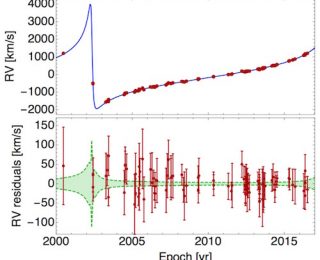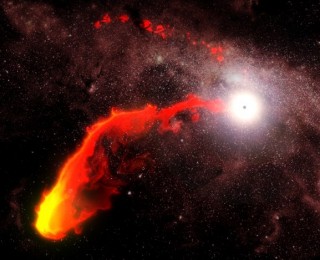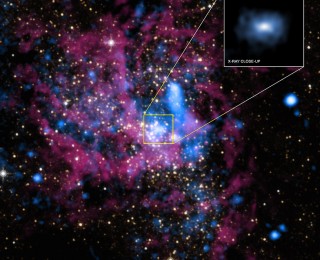
Is S0-2 a Binary Star?
When it zips past the Galactic Center black hole in 2018, how would a possible binarity of the star S0-2 affect the detectability of its relativistic motion?

When it zips past the Galactic Center black hole in 2018, how would a possible binarity of the star S0-2 affect the detectability of its relativistic motion?
More than 100 massive stars orbit the supermassive black hole at the center of our galaxy incredibly closely.

The black hole at the center of our galaxy, Sgr A*, is a very picky eater. However, with the discovery of the G2 cloud, astronomers have had the opportunity to watch the infrequent feeding process in Sgr A* in action. While the origin of this cloud is still debated, research is beginning to suggest that G2 is a gas cloud that was ripped away from a giant star in orbit around our galaxy’s central black hole.

Keep up with all the latest happenings in Maryland with us, as we continue to liveblog the 223rd meeting of the American Astronomical Society. Also stay up to the minute with us on Twitter, @astrobites!

Sgr A* – the supermassive black hole sitting in the center of the Milky Way – is often referred to as a ‘starved’ black hole, meaning that it swallows very little of the nearby cosmic gas and dust. The authors of this paper observed Sgr A* with the Chandra X-ray telescope for 3 mega seconds, throughout which only 1% of the gas available to Sgr A* actually accreted onto the black hole. It swallows cold gas, while rejecting hot gas – ejecting the matter back into space.

The long discussed gas cloud, G2, has finally begun its descent into the supermassive black hole at the center of our galaxy. The cloud has been so stretched that the head has swung around the black hole entirely and is rapidly coming back towards us (at a speed of 3000 km/s – 1% the speed of light), while the tail is still falling inwards – an event that will last for a year.